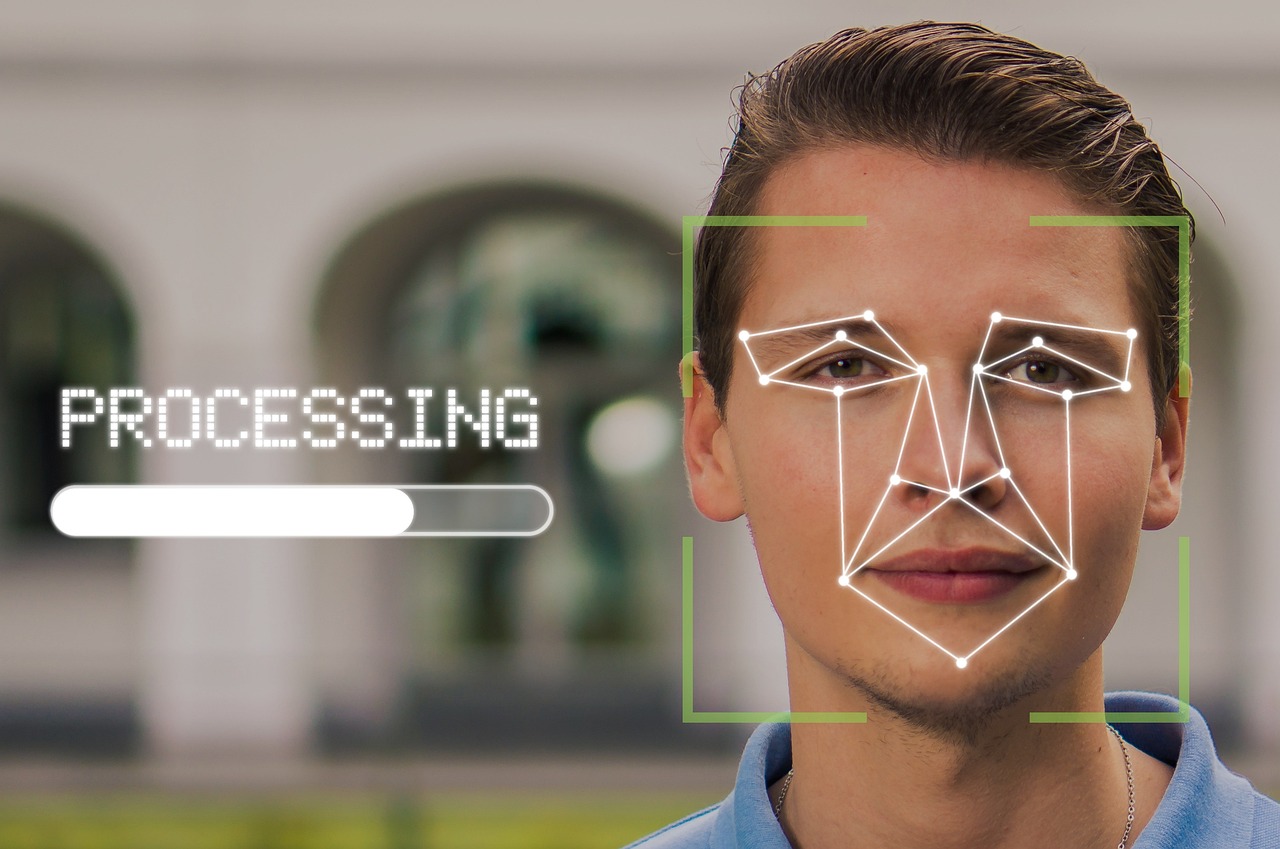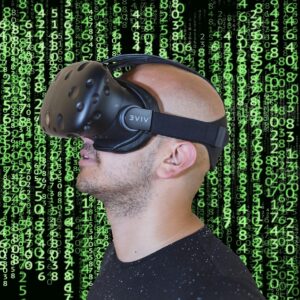Have you ever wondered how your smartphone is able to recognize your face and unlock itself? Or how security cameras are able to identify suspects in a crowd? The answer lies in facial recognition technology, a rapidly developing field with immense potential for various industries. However, with great promise comes great concern, as the use of facial recognition technology raises ethical and legal questions surrounding privacy and potential misuse. Facial recognition technology has come a long way since its early beginnings in the 1960s. The technology uses algorithms to analyze facial features, such as the distance between the eyes, nose, and mouth and creates a unique facial signature that can be compared to a database of known faces. This technology has a wide range of applications, including security, law enforcement, marketing, and even healthcare. While facial recognition technology has the potential to revolutionize these industries, it also has the potential for misuse and abuse, prompting concerns about privacy and civil liberties. in this article, we will discuss The Promise And Concerns Of Facial Recognition Technology.
The History and Development of Facial Recognition Technology
Let’s take a stroll down memory lane and learn about how this whole face-scanning thing came to be. Facial recognition technology has been around for decades, but it wasn’t until the 1990s that it started to gain traction.
The first facial recognition software was created by Woody Bledsoe, Helen Chan Wolf, and Charles Bisson in 1964. It was called ‘The Woody Bledsoe Face Recognition System’ and could only detect faces at an angle of 20 degrees.
Since then, facial recognition technology has improved significantly. It uses artificial intelligence to identify and analyze unique facial features such as the distance between the eyes, nose, and mouth, and the shape of the face.
However, the technology has not been without its controversies. Critics argue that its accuracy is not always reliable, and it can be biased against certain demographics, including people of color and women. Additionally, concerns have been raised over privacy violations, as facial recognition software can be used to track individuals without their consent.
Despite these concerns, facial recognition technology is being implemented in various industries, from law enforcement to marketing.
How Facial Recognition Technology Works
By analyzing unique facial features and comparing them to a database of known faces, facial recognition technology can accurately identify individuals in real-time. This process involves using facial recognition algorithms and machine learning techniques to analyze facial features such as the distance between the eyes, the shape of the nose, and the contours of the face. These algorithms are designed to identify patterns in the facial features and compare them to a database of known faces to find a match.

Facial recognition technology works by capturing an image or video of an individual’s face, processing it through facial recognition algorithms, and comparing it to a database of known faces. The technology is constantly evolving and improving, with machine learning techniques being used to improve the accuracy of the algorithms.
However, the use of facial recognition technology also raises questions about privacy and surveillance, particularly when it comes to the collection and storage of facial data. As the use of this technology becomes more widespread, it’s important to consider the potential implications for privacy and civil liberties.
Real-World Applications of Facial Recognition Technology
You may have noticed that your face is being scanned and identified by security cameras in public spaces, making you feel uneasy about the lack of control over your personal data and privacy.
Facial recognition technology has been increasingly used in marketing to track customer behaviours and preferences. Companies can use this technology to customize their advertising campaigns and target their ideal customers. For example, a store can identify a customer who has previously purchased a specific product and show them ads related to that product, increasing the likelihood of a sale. However, this use of facial recognition technology raises concerns about data privacy and the potential for companies to misuse this information, such as selling it to third parties without consent.
Facial recognition technology has also been adopted by law enforcement agencies to identify and track suspects. This technology can quickly scan through thousands of images and identify individuals who may be linked to a crime. This has led to successful arrests and convictions, but it also raises concerns about false positives and the potential for racial and gender biases in the algorithms used.
Additionally, the use of facial recognition technology by law enforcement has been criticized for its potential to infringe on civil liberties and exacerbate existing biases in the criminal justice system. As the use of facial recognition technology continues to grow, it’s important to carefully consider the potential benefits and drawbacks of its applications in various industries.
Accuracy and Bias in Facial Recognition Algorithms
The current section delves into the accuracy and potential biases present in algorithms used for identifying individuals based on their facial features. Facial recognition algorithms have made significant strides in recent years, with developers claiming accuracies of up to 99%.
However, studies have shown that these algorithms have limitations that can result in false identifications and misidentifications, especially when identifying individuals from certain racial and ethnic groups.
Moreover, there is growing concern over the potential biases present in facial recognition technology. Biases can arise from various factors, including the demographics of the individuals used to train the algorithms and the quality of the images used.
These biases can have significant societal impacts, leading to wrongful arrests, discrimination, and invasion of privacy. While efforts are being made to improve the accuracy and reduce biases in facial recognition algorithms, the technology’s limitations and potential societal impact must be thoroughly understood before its widespread deployment.
Privacy Concerns and Potential Misuse of Facial Recognition Technology
As you navigate through your daily life, it’s important to be aware of the potential misuse and invasion of privacy that can occur with the use of facial identification tools.
Facial recognition technology has the ability to track your movements, monitor your behaviour, and collect data about you without your knowledge or consent. This data can then be used for a variety of purposes, including targeted advertising, law enforcement surveillance, and even political manipulation.
One of the biggest concerns with facial recognition technology is data protection. The vast amount of data collected by these tools can be easily hacked or stolen, putting your personal information at risk.
Additionally, the use of facial recognition technology can lead to the creation of a surveillance state, where individuals are constantly monitored and tracked. This can have a chilling effect on free speech and expression, as people may be hesitant to speak out or engage in activities that could be deemed suspicious.
As we continue to develop and implement facial recognition technology, it’s important to consider the potential consequences and take steps to protect our privacy and civil liberties.
Ethical and Legal Implications of Facial Recognition Technology
Get ready to explore the ethical and legal implications of using machines that can recognize faces and make decisions based on that recognition.
One of the main concerns is how facial recognition technology affects data collection. Facial recognition systems collect sensitive personal information, such as biometric data, without adequate consent. This data can be used for purposes beyond the original intent, such as profiling and surveillance.
Additionally, the accuracy of facial recognition technology has been shown to vary depending on factors such as race and gender, leading to potential discrimination and bias. Algorithm transparency is another important issue to consider when discussing the ethical and legal implications of facial recognition technology.
The algorithms used to create and operate these systems are often complex and difficult to understand, making it challenging to assess their accuracy and potential biases. This lack of transparency leads to a lack of accountability and the potential for misuse.
To address these concerns, there have been calls for increased regulation and transparency in the development and use of facial recognition technology. As technology continues to advance, it’s crucial that we carefully consider the potential implications and take steps to ensure that these systems are used ethically and responsibly.
The Future of Facial Recognition Technology and Society’s Response
You might be surprised to learn about the potential impact that facial recognition systems could have on society in the coming years and how people are responding to it.
Facial recognition technology has been a topic of debate in recent years, with some people concerned about the potential misuse of this technology, while others see its potential to enhance security and convenience. However, public opinion on facial recognition technology is largely divided, with some people expressing concern about privacy violations and potential biases in the technology.
In response to these concerns, some countries have introduced regulations and policies to ensure that facial recognition technology is used ethically and responsibly.
For example, the European Union has proposed a temporary ban on facial recognition technology in public spaces, while the state of California has introduced legislation that requires companies to obtain consent from individuals before using their facial data.
While these regulations and policies are a step in the right direction, more still needs to be done to ensure that facial recognition technology is used in a way that respects individual privacy and civil liberties.
Frequently Asked Questions
What are the most common ways that facial recognition technology is currently being used in law enforcement?
Facial recognition technology is widely used in law enforcement for various purposes. One of the most common uses is for identifying suspects in criminal investigations. This technology allows law enforcement agencies to quickly and accurately match a suspect’s face with images in their database, aiding in the investigation and potentially leading to an arrest.
However, there are ethical considerations that must be taken into account when using this technology, such as privacy concerns and the potential for bias. Despite these concerns, facial recognition technology remains a valuable tool for law enforcement agencies in solving crimes and ensuring public safety.
How do facial recognition algorithms account for variations in lighting and facial expressions?
You may be wondering how facial recognition algorithms account for variations in lighting and facial expressions. Well, these algorithms use a variety of techniques to adjust for different lighting conditions, such as normalizing the brightness and contrast of the image or even using infrared lighting.
Additionally, facial expressions can be a challenge for these algorithms as they can drastically change the appearance of a person’s face. However, many algorithms now incorporate machine learning techniques to analyze the subtle differences in facial features that occur with different expressions.
By training the algorithm on a large dataset of faces with various expressions, it can learn to recognize the same person regardless of their current expression.
What steps can be taken to minimize the potential for privacy violations when using facial recognition technology?
To minimize potential privacy violations when using facial recognition technology, there are several privacy protection measures that can be taken.
First, it’s important to inform individuals when and how their biometric data will be collected, stored, and used.
Additionally, implementing strict access controls and encryption for the data can help ensure that only authorized parties have access.
It’s also crucial to conduct regular audits and risk assessments to identify and address any potential vulnerabilities.
Lastly, it’s important to consider the ethical implications of using facial recognition technology, including issues related to bias and discrimination.
By taking these steps, organizations can help ensure that the use of facial recognition technology is both effective and ethical.
Are there any countries or regions that have banned the use of facial recognition technology?
You might be surprised to learn that some countries have banned facial recognition technology altogether due to ethical concerns.
For instance, in May 2019, San Francisco became the first city in the United States to ban facial recognition technology. Similarly, the European Union has considered a ban on facial recognition in public spaces due to privacy concerns.
These countries recognize the potential harm that this technology can bring, such as inaccurate identification, bias, and loss of privacy.
As the use of facial recognition technology continues to grow, it’s vital to consider the ethical implications and take necessary precautions to protect individuals’ privacy and security.
What impact might the widespread adoption of facial recognition technology have on social structures and power dynamics?
If facial recognition technology becomes widely adopted, it could have significant social implications and impact power dynamics. The ability to quickly and accurately identify individuals could be used for surveillance and control, potentially infringing on civil liberties and reinforcing existing power structures.
On the other hand, it could also be used for positive purposes, such as improving security and efficiency. It’ll be important to carefully consider the potential consequences and develop regulations to prevent abuse of this technology.
Conclusion
You’ve just learned about the promise and concerns of facial recognition technology. It’s a rapidly developing field that has the potential to revolutionize many industries, from law enforcement to marketing. However, it also raises serious concerns about privacy, accuracy, and bias.
Despite its potential benefits, facial recognition technology must be approached with caution. It’s essential to ensure that the algorithms used are accurate and unbiased, and that the technology isn’t misused to violate people’s privacy or civil liberties.
As society continues to grapple with the ethical and legal implications of facial recognition technology, it’s important to remain vigilant and informed. Remember, when it comes to facial recognition technology, knowledge is power.




